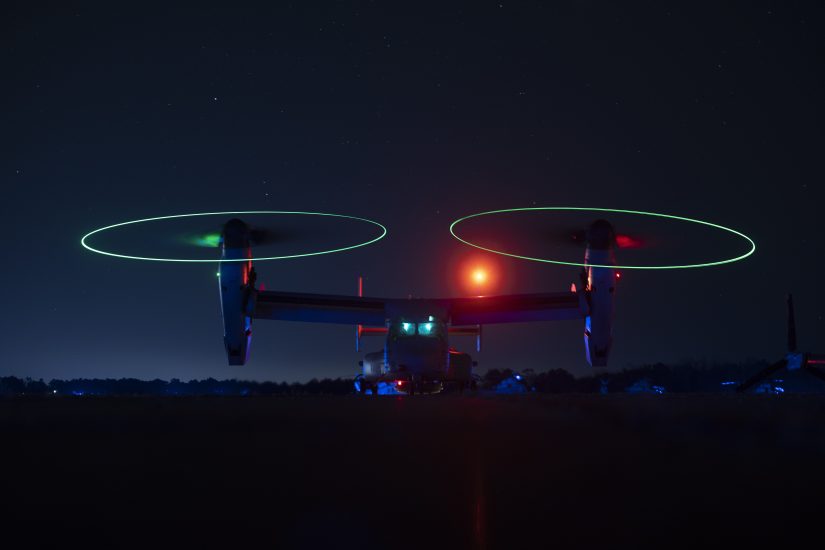The US Navy Department’s Program Executive Officer Land Systems (PEO LS), Program Manager, Ground Based Air Defense (PM GBAD) is looking for interested parties to address the United States Marine Corps’ (USMC) force protection installation security capability gap for the detection, identification, tracking, and defeat of small Unmanned Aircraft Systems (sUAS) operating within the vicinity of specific missions sets associated with USC Title 10, Section 130i. This original request for information (RFI) ( M67854-23-I-0001)was published on November 15, 2022 with a deadline of January 13. This new RFO was announced on January 11 2023 with a deadline of March 10, 2023.
According to the tender document:
“The purpose of this RFI is to seek potential solutions and feedback from industry and gather information on candidate non-developmental systems that are currently available to support a potential acquisition under the I-CsUAS program. The USMC (Government) wants to assess industry’s ability to provide and sustain a materiel solution within an accelerated acquisition schedule at an affordable cost, and to determine the technical and manufacturing maturity of candidate systems that provide capabilities desired for I-CsUAS as described in paragraph 3. This RFI constitutes market research in accordance with FAR Part 10 and is not an RFP. USMC is issuing this RFI, in support of PEO LS, to determine if any potential sources in industry have the capability to provide the support described herein.
“The Government is particularly interested in Industry recommendations and feedback to improve contract requirements, contract structure and type, performance metrics and incentives.
“Respondents who are interested are requested to provide the information that identifies their capability to meet or exceed technical and support requirements described herein:
- System must provide the entire kill chain (detect, track, identify and defeat) against Group 1 and 2 sUAS threats. The defeat aspect of the kill chain; however, will be via non-kinetic means.
A ‘non-kinetic’ defeat is defined as an electromagnetic, acoustic, or other signature disruption of an sUAS’ flight path short of using a kinetic defeat capability (such as drone-on-drone intercept, laser, or direct fire munition).
The system will be deployed on 20 Marine Corps installations within the Continental United States (CONUS) and 13 Marine Corps installations outside the Continental United States (OCONUS).
“Minimum system requirements: 24/7 detection in day/night, all-weather with multi-modal active and passive sensor payloads fusing all sensor data into a single operator view. It must have the ability to passively detect radio frequency (RF) signals associated with sUAS and defeat them. Also requires real time, automated object detection and identification to be able to autonomously detect, identify, classify, and track objects of interest (provide current and estimated minimum and maximum ranges).
“User interface technology is required to reduce operator workload. The user interface should allow the operator to respond or ignore based on the threat, rules of engagement, etc. The system must alert operators via notification on a user interface (computer or mobile device).
“How many objects can your system identify and track at one time? Are there any future plans to add additional capabilities to track more than currently stated? If there are future plans what is the anticipated timeline?
“After initial detection, how long does it take for the system to notify the user? How long after the detection does the system take to identify and classify a UAS?
“The capability will operate as part of layered defense solution and must integrate multiple sensors and fuse the data into a single, secure, operator view display. The system and the information that is processed by the system, shall be protected through the implementation of Committee on National Security Systems (CNSS) security controls.
“The system should have the ability to apply sensor fusion, Machine Learning (ML), and Artificial Intelligence (AI). The system should facilitate end-to-end sensoring including target handoff and track fusions. The Government differentiates and recognizes the definitional differences between sensor correlation and sensor fusion.
- The system must be modular and scalable (different sensors, etc.) to be able to provide an optimal system package for a given mission set at CONUS and OCONUS locations, based on Government provided intelligence, operator inputs, site surveys and vendors expertise of various available sensors. Provide pictures or drawings of the various system configurations.
“ What is your system’s anticipated/demonstrated rate of false positive identifications (alerting the user to a Group 1/2 UAS when the object in question is not a Group 1/2 UAS), and what is its anticipated/demonstrated false negative rate (a Group 1/2 UAS is operating within the system’s detection capabilities, but the user is not alerted)?
For more information
https://sam.gov/opp/c33f51666cc3473991ec58a55a05e431/view
(Image: US Marine Corps)




